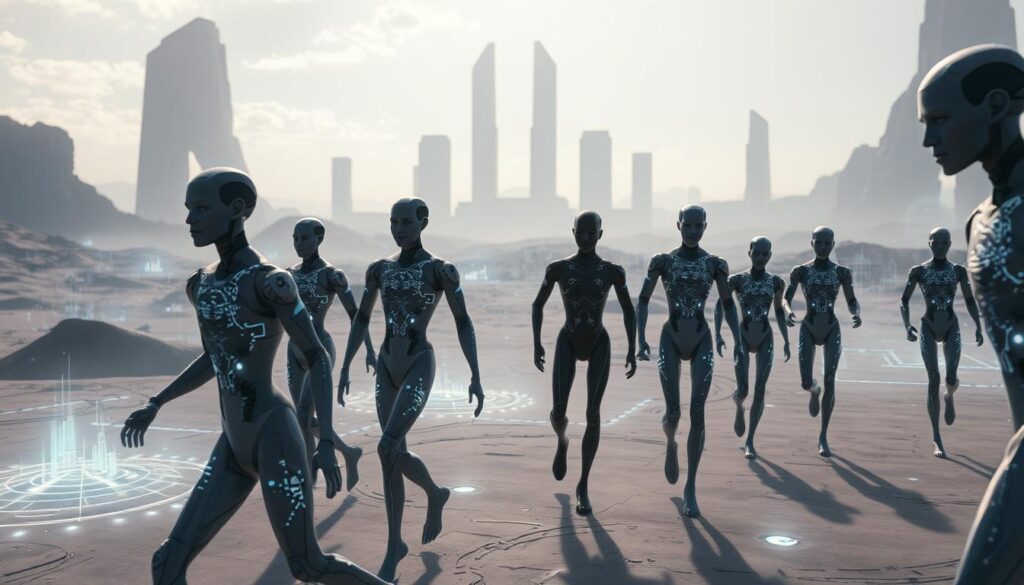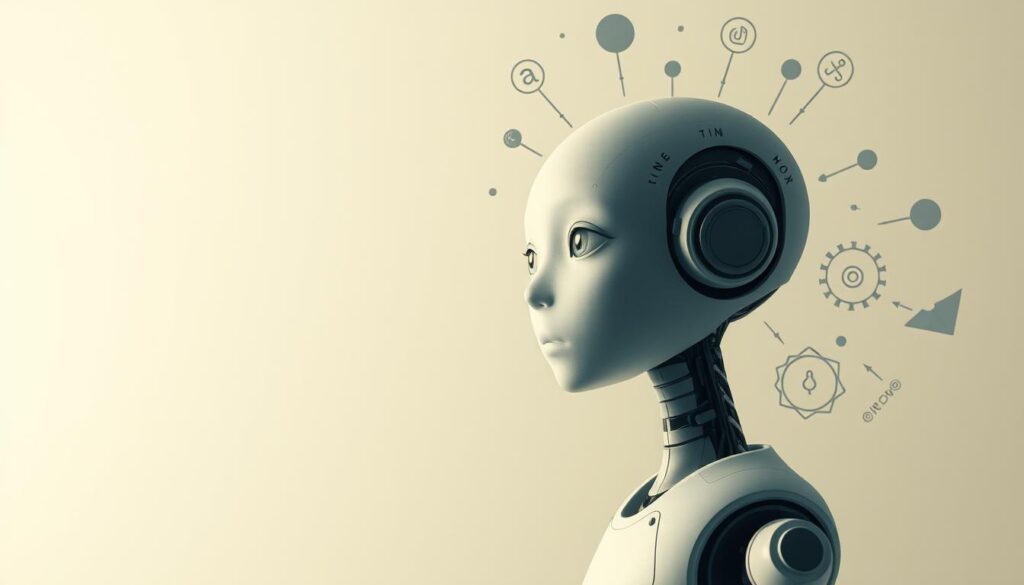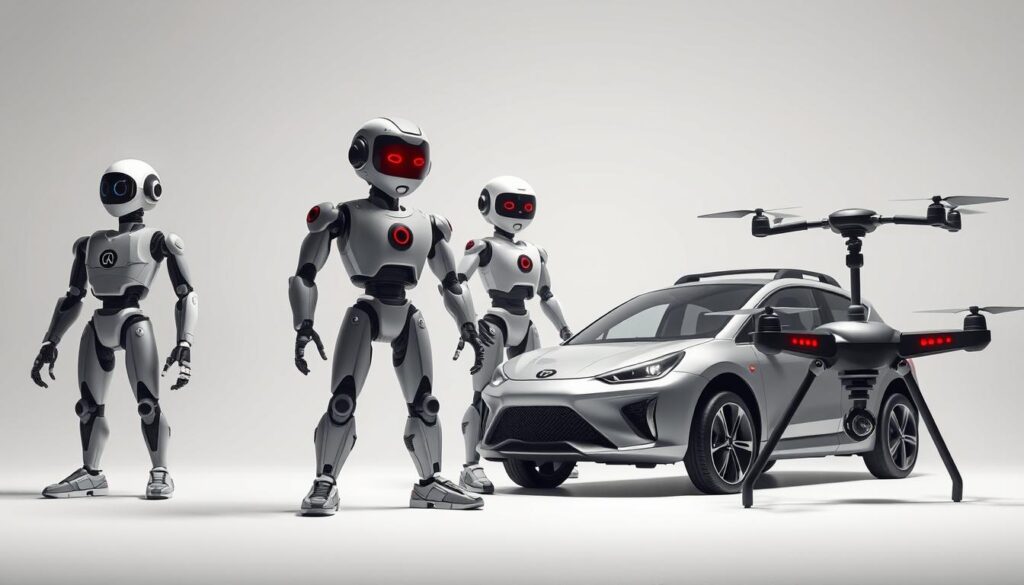“AI is the new electricity.” These words from Andrew Ng, a pioneer in artificial intelligence, encapsulate the transformative power of AI in today’s world. Among the most impactful innovations in this realm are AI agents—intelligent entities designed to perform specific tasks with precision and autonomy.
AI agents have evolved from simple chatbots to sophisticated systems capable of observing, deciding, and acting within complex environments. These agents are integral to modern business automation, enabling efficient decision-making and streamlining operations. The market for AI agents is thriving, with a valuation of $3.86 billion in 2023 and a projected annual growth rate of 45.1%1.
From model-based reflex agents optimizing supply chains to goal-based agents enhancing logistics, the applications of AI agents are vast and varied. They play a crucial role in sectors like finance, healthcare, and transportation, driving innovation and efficiency. This article delves into the five primary types of AI agents, exploring their unique capabilities and real-world applications.
Key Takeaways
- AI agents are intelligent systems capable of autonomous task execution.
- They have evolved from simple chatbots to complex, decision-making entities.
- Applications span multiple industries, including finance, healthcare, and logistics.
- The market for AI agents is growing rapidly, with a valuation of $3.86 billion in 20231.
- Understanding the different types of AI agents is crucial for leveraging their potential in various sectors.
Introduction to AI Agents

AI agents are sophisticated systems designed to perform specific tasks autonomously, leveraging advanced algorithms to process information and make decisions. These agents interact with their environment through sensors and feedback loops, enabling them to adapt and improve over time. At their core, AI agents are built to optimize efficiency, whether handling customer interactions or analyzing complex data sets.
Defining AI Agents and Their Roles
In modern business environments, AI agents play a pivotal role in automating tasks and enhancing decision-making. They excel in customer service scenarios, handling multiple interactions simultaneously and providing 24/7 support2. These systems generate valuable insights from customer data, helping businesses refine their strategies and improve service quality.
Context and Market Growth in 2023
The AI agents market was valued at $3.86 billion in 2023, with a projected annual growth rate of 45.1% through 20303. This growth is driven by increasing demand for automation and advancements in natural language processing. Businesses are investing heavily in AI agents to streamline operations, from inventory management to customer service, leading to improved productivity and reduced operational costs.
The technological underpinnings of AI agents include sensors for data collection, input processing for decision-making, and feedback loops for continuous improvement. These components allow AI agents to interact effectively with both systems and customers, ensuring seamless integration into various industries.
Understanding Simple Reflex Agents

Simple reflex agents operate based on immediate sensory inputs, using predefined condition-action rules to make decisions. These agents don’t rely on memory or learning, making them efficient in predictable environments. For example, industrial safety sensors and auto-sprinkler systems benefit from this straightforward approach4.
How They Operate with Condition-Action Rules
Their behavior is driven by clear rules that dictate actions based on specific conditions. This setup ensures quick and reliable responses without the need for complex processing. For instance, email auto-responders use these rules to send predefined replies, enhancing efficiency in customer service5.
Real-world Examples in Everyday Applications
These agents are widely used in applications where immediate action is crucial. From traffic lights to automated email responses, simple reflex agents provide consistent and efficient solutions. Their effectiveness in limited, predictable environments makes them a cornerstone in various industries4.
While they excel in simplicity, their lack of adaptability limits them to specific tasks. However, their reliability in straightforward scenarios ensures their continued use in many applications.
Deep Dive into Model-Based Reflex Agents

Model-based reflex agents are a step ahead of simple reflex agents, equipped with internal models that enable them to make more informed decisions. These agents maintain a representation of their environment, allowing them to infer hidden aspects and act based on both current and past data6.
Internal World Models and Sensor Data
These agents use their internal models to track state information and past data, enhancing their decision-making capabilities. For instance, smart home security systems employ model-based reflex agents to detect anomalies by analyzing historical and real-time sensor data7.
In manufacturing, quality control systems benefit from these agents, which integrate sensor data with internal models to predict potential issues before they occur. This proactive approach improves efficiency and reduces downtime8.
The integration of sensor data with past environmental states allows model-based reflex agents to adapt their behavior dynamically. For example, network monitoring systems can adjust their alerts based on historical trends and current traffic patterns, ensuring more accurate and responsive actions6.
Maintaining an internal world model offers both advantages and challenges. While it enhances decision-making, it also requires significant computational resources to update and maintain these models accurately. Despite these complexities, the benefits in dynamic environments make them invaluable in various industries7.
Exploring Goal-Based Agents

Goal-based agents are designed to achieve specific objectives through careful planning and evaluation of future outcomes. These agents excel in environments where clear goals drive performance, such as routing optimizations and automated process management in logistics9.
Planning and Future-Oriented Decision-Making
Goal-based agents analyze current conditions to predict future states and choose optimal actions. They decompose larger objectives into smaller, manageable sub-goals, facilitating effective planning10. For instance, industrial robots in manufacturing use goal-based agents to handle complex tasks by breaking them into simpler steps.
These agents evaluate potential actions based on their impact on achieving specific goals. This approach enables advanced planning and adaptability, making them suitable for dynamic environments where clear objectives are crucial9.
Industries Benefiting from Goal-Based Approaches
Automated warehouse systems are a prime example of goal-based agents in action. These systems use structured knowledge to meet long-term objectives, such as optimizing inventory management and streamlining order fulfillment processes10.
The role of evaluative criteria in decision-making is significant, as it allows these agents to reassess goals and modify strategies in response to environmental changes. This flexibility ensures they remain effective in various industries9.
Examining Learning Agents

Learning agents represent a cutting-edge advancement in AI, leveraging experience and feedback to enhance their performance over time. These agents are designed to adapt dynamically, making them invaluable in environments where change is constant. By continuously processing feedback, learning agents refine their decision-making processes, leading to improved outcomes in various applications11.
Adaptive Behavior Through Experience and Feedback
At the core of learning agents lies their ability to evolve through experience. They utilize feedback loops to assess their actions’ effectiveness and adjust their strategies accordingly. This adaptive behavior is evident in recommendation systems, where agents analyze user preferences to offer personalized suggestions, and in quality control systems, where they detect and correct anomalies in production processes12.
Learning agents must balance exploring new strategies and exploiting learned knowledge to optimize performance. This balance ensures they remain efficient while continuously improving. However, their effectiveness heavily depends on the quality and quantity of data they process, as well as the computational resources available for complex algorithms13.
Real-world applications of learning agents include customer support chatbots that refine their responses based on user interactions and industrial process controls that optimize workflows through iterative learning. These agents exemplify how AI can autonomously enhance operations, driving innovation across industries11.
Insight into Utility-Based Agents

Utility-based agents are advanced AI systems designed to make decisions by evaluating outcomes through utility functions. These functions assign numerical values to different states, allowing the agent to choose actions that maximize overall utility14.
Utility Functions and Maximizing Outcomes
At their core, utility-based agents rely on utility functions to quantify the desirability of outcomes. This mathematical approach enables them to handle complex, dynamic environments by evaluating multiple possibilities and selecting the optimal action. For instance, in financial portfolio management, a utility-based agent might balance risk and return by assigning higher utility to lower-risk investments with stable returns14.
In smart energy systems, these agents optimize energy consumption by assessing various scenarios and choosing the one that maximizes efficiency while minimizing costs. This process involves continuous numerical evaluation, ensuring that the agent adapts to changing conditions and maintains optimal performance14.
The utility function’s role is crucial, as it provides a clear framework for decision-making. By breaking down complex objectives into manageable components, utility-based agents can systematically evaluate each outcome and select the best course of action. This structured approach is particularly valuable in environments where multiple competing goals must be balanced15.
For example, Anthropic Claude, a utility-based agent, uses utility functions to assign numerical values representing success or happiness to different states faced by users. This capability allows it to handle trade-offs between multiple goals effectively14.
Utility-based agents are integral to applications requiring precise optimization, such as resource allocation and game-playing. Their ability to handle uncertain situations flexibly makes them indispensable in modern AI applications14.
By emphasizing numerical evaluation, utility-based agents ensure that decisions are made with clarity and precision, driving efficiency in various industries. Their role in dynamic environments underscores the importance of utility functions in achieving optimal outcomes14.
Learn moreabout how utility-based agents are transforming industries through advanced decision-making.
What are the 5 types of AI agents?

Comparing the Essential Characteristics of Each Type
AI agents are classified into five distinct types, each designed for specific tasks and environments. Understanding their unique characteristics helps in selecting the right agent for particular applications. Below is a comparative overview of these agents, highlighting their strengths and real-world applications.
Simple Reflex Agents operate using condition-action rules, making them ideal for straightforward tasks. They excel in predictable environments, such as automated email responders and traffic light systems, reducing operational costs by up to 15%5.
Model-Based Reflex Agents use internal models to infer unobserved aspects, enhancing decision-making. They are employed in smart home security and manufacturing, improving energy efficiency by 10-20%5.
Goal-Based Agents achieve specific objectives using planning algorithms. They are crucial in logistics for route optimization, leading to cost savings of up to 30%5, and in strategic game playing.
Learning Agents adapt through experience, improving performance over time. They are vital in dynamic environments, enhancing metrics by 20-50%5, and in customer support systems.
Utility-Based Agents maximize outcomes using utility functions, balancing multiple objectives. They are key in financial portfolio management and smart energy systems3.
Each type has unique strengths and limitations, making them suitable for different industrial applications. Simple reflex agents are cost-effective for basic tasks, while model-based agents offer deeper insights. Goal-based agents excel in strategic planning, learning agents adapt dynamically, and utility-based agents optimize complex decisions.
For instance, in healthcare, AI agents automate revenue cycle management, improving efficiency3. In finance, they enhance portfolio management by balancing risk and return3. In manufacturing, they optimize inventory and streamline order fulfillment3.
Understanding these agents’ roles and applications allows businesses to leverage their potential effectively, driving innovation and efficiency across industries. Learn more about how these agents are transforming various sectors.
Emerging Trends of AI Agents in Business
AI agents are revolutionizing business operations by enabling smarter automation and seamless integration into complex environments. These advanced systems are becoming indispensable tools for modern companies, driving efficiency and innovation across various sectors.
Automation and Integration in Modern Workflows
One of the most significant trends is the increased adoption of AI agents in automating repetitive tasks. For instance, businesses are leveraging these agents to handle customer inquiries, leading to a 50% reduction in resolution time16. This not only enhances customer satisfaction but also allows employees to focus on more strategic tasks.
AI agents are also transforming how companies allocate resources. By optimizing processes, they help organizations operate more efficiently within dynamic environments. For example, smart city traffic management systems use AI agents to analyze real-time data, reducing congestion and improving traffic flow17.
Another notable trend is the integration of AI as a strategic decision-making tool. Enterprise automation platforms now employ AI agents to analyze vast amounts of data, providing insights that inform critical business decisions. This shift is evident in industries like finance, where AI-driven tools are enhancing risk management and portfolio optimization17.
Looking ahead, these trends imply a significant shift in the future workforce and technology investments. As AI agents become more prevalent, businesses will need to invest in upskilling employees and developing infrastructure to support these advanced systems. This evolution underscores the importance of AI agents as a cornerstone of modern business strategy.
Real-World Applications of AI Agents
AI agents are transforming industries by automating tasks, enhancing decision-making, and driving efficiency. From healthcare to finance and manufacturing, these agents are proving indispensable in modern operations.
Case Studies from Healthcare, Finance, and Manufacturing
In healthcare, AI agents improve diagnostic accuracy and personalize treatment plans. For example, they can analyze medical scans with over 90% accuracy, significantly enhancing patient outcomes18.
In finance, these agents detect fraudulent transactions with over 95% accuracy, protecting sensitive data and reducing losses18. They also optimize investment portfolios, balancing risk and return effectively.
In manufacturing, AI agents predict equipment failures, reducing unplanned downtime by 30-50%18. They optimize supply chains, ensuring timely delivery and reducing operational costs.
Scaling AI Agents for Improved Decision-Making
AI agents scale efficiently across industries, handling large datasets and adapting to new conditions. For instance, streaming services use utility-based agents to provide personalized recommendations, enhancing user engagement19.
Smart grids leverage these agents to optimize energy distribution, reducing costs and improving efficiency19. This scalability makes AI agents a valuable asset in dynamic environments.
As AI technology advances, the integration of agents into various sectors continues to grow, driving innovation and efficiency across the board.
Conclusion
AI agents have revolutionized modern business practices, offering tailored solutions across various industries. From simple reflex agents to advanced learning and utility-based systems, each type brings unique capabilities to the table. Simple reflex agents excel in straightforward tasks, while model-based agents leverage historical data for informed decisions. Goal-based agents thrive in environments requiring strategic planning, and learning agents adapt over time, enhancing performance through experience. Utility-based agents, meanwhile, optimize complex decisions using numerical evaluations.
The evolution from basic reflex agents to sophisticated learning agents underscores the rapid advancement in AI technology. These systems have transformed industries, from healthcare to finance, by automating tasks, enhancing decision-making, and driving efficiency. As AI continues to progress, businesses are encouraged to explore and adopt these agents to reach higher operational levels and stay competitive.
For a deeper understanding of how AI agents are shaping the future, explore the five levels of AI agents and their transformative impact on autonomous systems20.
FAQ
How do simple reflex agents operate in AI systems?
What distinguishes a model-based reflex agent from other types?
How do goal-based agents differ from other AI agents?
What role does learning play in AI agents?
How do utility-based agents maximize outcomes?
What industries benefit the most from AI agents?
How are AI agents integrated into modern workflows?
What is the future of AI agents in business?
Source Links
- 13 Types of AI Agents (with Examples)
- What Are AI Agents? Benefits, Examples, Types
- 7 Types of AI Agents to Automate Your Workflows in 2025 | DigitalOcean
- What Are AI Agents? | IBM
- What are Different Types of AI Agents?
- AI Agents Understanding the Backbone of Modern AI
- What Are AI Agents, and How Do They Work? | Lakera – Protecting AI teams that disrupt the world.
- What Are AI Agents? A Complete Guide
- Types of AI Agents For (2025)
- Types of AI Agents: Choosing the Right One
- 5 Types of AI Agents You Should Know About
- 5 Key Types Explained With Examples // Unstop
- Understanding Machine Learning Agents: Types, Differences, And Applications In AI – Brain Pod AI
- 6 Types of AI Agents: Exploring the Future of Intelligent Machines
- AI Agents: 5 Types, Benefits, and Real-World Examples
- What Are AI Agents: Types, Tips, Benefits & Examples
- 5 Trends Defining AI Agents In Crypto For Your Business
- Types of AI Agents: How They Work and Real-World Applications
- 36 Real-World Examples of AI Agents
- Types of Agents in AI – GeeksforGeeks







